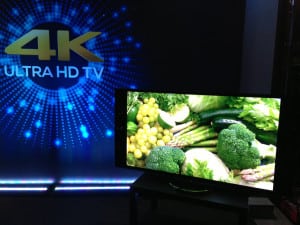Latest News
[Via Satellite 04-19-2016] Tricolor TV is one of the main satellite TV players in Russia and has been one of the first DTH operators to launch Ultra-HD services into the market. In November last year, Tricolor TV announced it had started to broadcast its Ultra-HD package, which included two new Ultra-HD TV channels: Tricolor Ultra HD and Insight UHD. Subscribers of Tricolor TV gain access to movies and documentaries, as well as sports and entertainment programs broadcasted in 4K at no extra charge. The channels of the package are broadcasted at 3840×2160 resolution with an image transmission rate of 50 frames per second (fps).
Alexey Kholodov, СCO at Tricolor TV, told Via Satellite that the market is conducive to the launch of these services and that Tricolor is moving forward together with manufacturers of TV sets, which have very optimistic plans relating to sales of 4K broadcast equipment in Russia.
“Vendors working in Russia assert that the market demand is sufficient in this regard. It is impossible to expect to benefit instantly from Ultra-HD, of course, as this project is intended for the future. But in the near future, according to experts, 330 million 4K panels will be sold throughout the world by the end of 2019. As for the advantages for Tricolor in regards to the launch of these services, we show our technical viability and readiness to launch innovative services, and we prove ourselves to be an industry leader,” he said.
Kholodov believes there are already more than 250,000 4K TV sets sold in Russia. He believes that, with the plans of TV manufacturers to build out their product ranges with gradually reducing prices for 4K models, the Russian market is expected to show “fairly rapid growth” in terms of 4K TV set sales. “The availability of high-quality 4K TV channels with some interesting content will also be an additional motivation for consumers,” he added.
Over the next 12 months, Tricolor aims to supply more content for its own Ultra-HD channels. Kholodov said the operator is working on “increasing the amount of content many times over.” To achieve this, Tricolor will need to adequately upgrade its hardware to customers. Any operator looking to launch 4K services is faced with a number of challenges. Kholodov highlights the shortage of the ready-to-use Ultra-HD content in the market as the main difficulty a pay-TV operator like Tricolor faces. “We have taken the Ultra-HD 3840×2160 standard, frame rate 50 fps as a basis. Most content manufacturers did not expect a serious promotion of such a format by any operator. Acting as the operator, we shall also need some time to introduce the new technology to users, to explain its features and benefits,” he said. “In addition to the highest quality image, there is one more very important feature of the format, which is not perceived by the subscriber: requirements for bandwidth. Bandwidth for broadcasting an Ultra-HD channel uses twice as much as bandwidth compared to HD. This means that the transponder capacity for broadcasting on an Ultra-HD channel must be at least twice as high when compared to an HD-channel.”
At the moment, it is expensive to put on Ultra-HD channels, and they have a limited audience, which is not necessarily a great combination. Although things are likely to change once more TV sets are acquired, which could fuel the demand for content. However, Kholodov believes the satellite industry could be doing more to help a company like Tricolor bring more 4K content to its customer base, and that upscaling is not a proper solution.
“Despite the claims of satellite operators in regard to assistance in the implementation of 4K broadcasting and attempts to effectively optimize the transmission of such signals, not all providers of satellite capacity are willing to lose the profit associated with the leased transponder capacity needed for two Ultra-HD channels. In the meantime, some [satellite] operators may try to use available methods for artificial improvement of the image with the use of ‘upscaling’ to save money. However, such a signal, to be frank, has nothing to do with real 4K broadcasting. Tricolor TV has stated long ago that it has objections against the use of ‘upscaling’ in such a scenario.”
Despite this, Kholodov is optimistic about the future of Ultra-HD. He believes technologies will improve. He highlights modern signal processing techniques that will give the possibility to broadcast more channels with the use of the same transponder capacity. He also said manufacturers of encoding equipment will develop new methods of statistical multiplexing of H.265 channels. “All this gives us hope that bandwidth will be larger and that the equipment will give the possibility to use it as efficiently as possible without losing the quality of the formed channel,” he added.
It will undoubtedly take a few years for 4K to make an impact, even with early adopters such as Tricolor making a big play in the market. “According to experts, the mass 4K implementation will begin in 2020 or later. Of course we will monitor the development of this market, and, if the prospects of this broadcasting remain the same, we will encourage the process of 4K development in Russia in every possible way, especially considering that we have already assumed this role and that we have everything in place to continue to move in this direction,” said Kholodov.
Get the latest Via Satellite news!
Subscribe Now